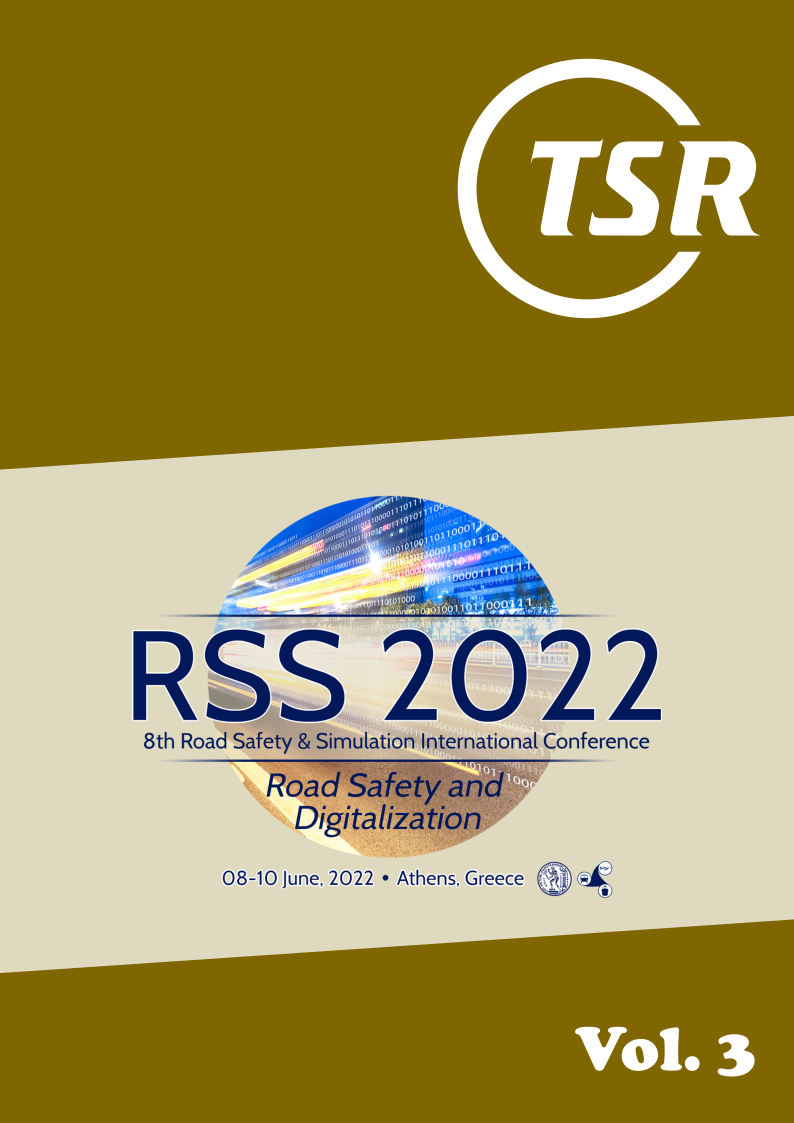How does training influence use and understanding of advanced vehicle technologies: a simulator evaluation of driver behavior and mental models
DOI:
https://doi.org/10.55329/udqk4583Keywords:
ADAS, ACC, driver training, driving simulation, mental models, vehicle automationAbstract
Advanced vehicle technologies such as Advanced Driver Assistance Systems (ADAS) promise increased safety and convenience but are also sophisticated and complex. Their presence in vehicles affects how drivers interact with the technologies and how drivers must know about these technologies. To maximize safety benefits, drivers must use such systems appropriately. They must understand how these technologies work and how they may change drivers' traditional responsibilities. Training has been recognized as an effective tool for accelerating knowledge and skills in traditional driving. Consequently, training is gaining recognition as an important tool for improving drivers' knowledge, understanding, and appropriate use of vehicle technologies as well. This study evaluated the effects of different training methods on drivers' use and understanding of vehicle automation, specifically Adaptive Cruise Control (ACC). Licensed drivers with little to no experience with ADAS features were randomly assigned into groups based on three training conditions: two experimental groups, ‘User Manual’ and ‘Visualization’, and a control group with a ‘Sham’ training. Participants were surveyed on their understanding of Adaptive Cruise Control before and after training. They also drove an advanced driving simulator equipped with ACC. The simulated drive offered multiple opportunities for the drivers to interact with the ACC and included embedded cues for engaging with the system and embedded probes to measure driver awareness of the system state. The results found a significant overall increase in knowledge of ACC after training for the experimental groups. Drivers in the experimental training groups also had better real-time awareness of the system state than the control group. The results indicate that training is associated with improved knowledge about the systems. It also shows differential effects of different approaches to training, with text-based training showing greater improvement. These findings have important implications for the design and deployment of these systems, and for policies around driver licensing and education.
Downloads
References
Abraham, H., B. Reimer, B. Mehler (2017), 'Advanced Driver Assistance Systems (ADAS): A Consideration of Driver Perceptions on Training, Usage & Implementation', Proceedings of the Human Factors and Ergonomics Society Annual Meeting, 61, 1954–1958. DOI: https://doi.org/10.1177/1541931213601967
Abraham, H., B. Reimer, B. Mehler (2018), 'Learning to Use In-Vehicle Technologies: Consumer Preferences and Effects on Understanding', Proceedings of the Human Factors and Ergonomics Society Annual Meeting, 62, 1589–1593. DOI: https://doi.org/10.1177/1541931218621359
Bengler, K., K. Dietmayer, B. Farber, M. Maurer, C. Stiller, H. Winner (2014), 'Three Decades of Driver Assistance Systems: Review and Future Perspectives', IEEE Intelligent Transportation Systems Magazine, 6(4), 6–22. DOI: https://doi.org/10.1109/MITS.2014.2336271
Blömacher, K., G. Nöcker, M. Huff (2018), 'The role of system description for conditionally automated vehicles', Transportation Research Part F: Traffic Psychology and Behaviour, 54, 159–170. DOI: https://doi.org/10.1016/j.trf.2018.01.010
Boelhouwer, A., A. P. van den Beukel, M. C. van der Voort, M. H. Martens (2019), 'Should I take over? Does system knowledge help drivers in making take-over decisions while driving a partially automated car?', Transportation Research Part F: Traffic Psychology and Behaviour, 60, 669–684. DOI: https://doi.org/10.1016/j.trf.2018.11.016
Braun, H., M. Gärtner, S. Trösterer, L. E. Akkermans, M. Seinen, A. Meschtscherjakov, M. Tscheligi (2019), 'Advanced driver assistance systems for aging drivers: Insights on 65+ drivers’ acceptance of and intention to use ADAS', 11th International Conference on Automotive User Interfaces and Interactive Vehicular Applications, Utrecht, the Netherlands, 21–25 September 2019. DOI: https://doi.org/10.1145/3342197.3344517
Carroll, J. M., J. R. Olson (1988), ‘Mental models in human-computer interaction’, in Helander, M. (ed.), Handbook of human-computer interaction (Amsterdam, the Netherlands: North-Holland)
Feinauer, S., L. Schuller, I. Groh, L. Huestegge, T. Petzoldt (2022), 'The potential of gamification for user education in partial and conditional driving automation: A driving simulator study', Transportation Research Part F: Traffic Psychology and Behaviour, 90, 252–268. DOI: https://doi.org/10.1016/j.trf.2022.08.009
Forster, Y., S. Hergeth, F. Naujoks, J. Krems, A. Keinath (2019), 'User Education in Automated Driving: Owner’s Manual and Interactive Tutorial Support Mental Model Formation and Human-Automation Interaction', Information, 10(4), 143. DOI: https://doi.org/10.3390/info10040143
Gaspar, J. G., C. Carney, E. Shull, W. Horrey (2020), 'The Impact of Driver’s Mental Models of Advanced Vehicle Technologies on Safety and Performance', AAA Foundation for Traffic Safety (Washington DC, USA), Technical report.
Jian, J.-Y., A. M. Bisantz, C. G. Drury (2000), 'Foundations for an Empirically Determined Scale of Trust in Automated Systems', International Journal of Cognitive Ergonomics, 4(1), 53–71. DOI: https://doi.org/10.1207/S15327566IJCE0401_04
Koustanaï, A., V. Cavallo, P. Delhomme, A. Mas (2012), 'Simulator training with a forward collision warning system: Effects on driver-system interactions and driver trust', Human Factors: The Journal of the Human Factors and Ergonomics Society, 54(5), 709–721. DOI: https://doi.org/10.1177/0018720812441796
Krampell, M., I. Solís-Marcos, M. Hjälmdahl (2020), 'Driving automation state-of-mind: Using training to instigate rapid mental model development', Applied Ergonomics, 83, 102986. DOI: https://doi.org/10.1016/j.apergo.2019.102986
Mehlenbacher, B., M. S. Wogalter, K. R. Laughery (2002), 'On the Reading of Product Owner’s Manuals: Perceptions and Product Complexity', Proceedings of the Human Factors and Ergonomics Society Annual Meeting, 46, 730–734. DOI: https://doi.org/10.1177/154193120204600610
Merat, N., J. D. Lee (2012), 'Preface to the Special Section on Human Factors and Automation in Vehicles: Designing Highly Automated Vehicles With the Driver in Mind', Human Factors: The Journal of the Human Factors and Ergonomics Society, 54(5), 681–686. DOI: https://doi.org/10.1177/0018720812461374
Pai, G., A. P. Hungund, S. Widrow, J. Radadiya, A. Pradhan (2021), 'Users’ Perception Of Training Approaches For Advanced Driver Assistance Systems (Adas)', Proceedings of the Human Factors and Ergonomics Society Annual Meeting, 65, 279–283. DOI: https://doi.org/10.1177/1071181321651266
Pradhan, A. K., G. Divekar, K. Masserang, M. Romoser, T. Zafian, R. D. Blomberg, F. D. Thomas, I. Reagan, M. Knodler, A. Pollatsek, D. L. Fisher (2011), 'The effects of focused attention training on the duration of novice drivers’ glances inside the vehicle', Ergonomics, 54(10), 917–931. DOI: https://doi.org/10.1080/00140139.2011.607245
Pradhan, A. K., G. Pai, A. P. Hungund, J. Pamarthi (2022), 'Does Training Improve Users’ Mental Models about Adaptive Cruise Control?'
Pradhan, A. K., G. Pai, J. Radadiya, M. A. Knodler, C. Fitzpatrick, W. J. Horrey (2020), 'Proposed Framework for Identifying and Predicting Operator Errors When using Advanced Vehicle Technologies', Transportation Research Record: Journal of the Transportation Research Board, 2674(10), 105–113. DOI: https://doi.org/10.1177/0361198120938778
Pradhan, A. K., J. Sullivan, C. Schwarz, F. Feng, S. Bao (2019), 'Training and education: Human factors considerations for automated driving systems', in Meyer, G., S. Beiker (eds.), Road Vehicle Automation 5. Lecture Notes in Mobility, (Cham, Switzerland: Springer). DOI: https://doi.org/10.1007/978-3-319-94896-6_7
Reimer, B., B. Mehler, J. F. Coughlin (2010), 'An evaluation of driver reactions to new vehicle parking assist technologies developed to reduce driver stress', New England University Transportation Center, Massachusetts Institute of Technology (Cambridge, MA, USA), Technical report.
Sportillo, D., A. Paljic, L. Ojeda (2018), 'Get ready for automated driving using Virtual Reality', Accident Analysis & Prevention, 118, 102–113. DOI: https://doi.org/10.1016/j.aap.2018.06.003
Sportillo, D., A. Paljic, L. Ojeda, P. Fuchs, V. Roussarie (2018), 'Light Virtual Reality Systems for the Training of Conditionally Automated Vehicle Drivers', IEEE Conference on Virtual Reality and 3D User Interfaces (VR), Tuebingen/Reutlingen, Germany, 18–22 March 2018. DOI: https://doi.org/10.1109/VR.2018.8446226
Published
How to Cite
Issue
Section
Categories
License
Copyright (c) 2023 Anuj K. Pradhan, Apoorva P. Hungund, Ganesh Pai, Jaji Pamarthi

This work is licensed under a Creative Commons Attribution 4.0 International License.











